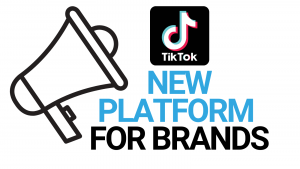Warning: This rant might spark your own feelings of frustration or a movement for change.
The other morning, I woke up in a foul mood. I had the perfect storm of not enough coffee coinciding with weather that wasn’t warming up fast enough and a vacation that felt a long way away.
And then I went into my inbox, and I got aggravated all over again. I saw everything I hate about email. And that kicked off this rant.
I can hear you saying, “Come on, Ryan. You’re the biggest booster of email around. You’ve been working in email for 23-plus years, and you’ve seen everything. How can you hate email?”
I don’t hate email at all. But I hate how many marketers use email. Here are my top five things email marketers need to stop doing and what to do instead.
Hang on!
1. The “no-reply” email address.
Do you want to see my head explode? (Of course, you do). Then send me an email where the “from” line reads “no-reply@XYZ.com.”
Jeez, people! Nothing screams “I don’t care what you think” better than “no-reply,” and its equally offensive cousin, “do-not-reply.”
Sure, you want people to use your reply forms instead of replying to your mail. You can’t comb through thousands of automated replies to your email campaigns to find personal comments. But that still doesn’t make it okay to use “no-reply.” It won’t stop people from replying.
Solution: Change the sending address in your ESP or your mail transfer agent (MTA) to something friendlier than “no-reply.” Use your brand name, email program name, your mascot’s name, anything but “no-reply. “
This could be the easiest thing to add value to your emails and increase engagement. You don’t have to adopt interactive email or inbox verification – just change the sender name to make your inbox view friendlier. It’s an easy opportunity to add a brand message, like “value@XYZ.com.”
2. Abandoned-browse emails
Talk about an email that has outlived its usefulness! If I start thinking about this, I’ll get mad all over again, and right now, I’m feeling pretty good. So read my rant in this post instead: Business stress is no excuse to spam.
Back in the early web browsing days, browse activity was a strong intent signal. You couldn’t browse from your phone or tablet while you watched TV. You were sitting at a computer. It was like appointment browsing on a desktop computer.
Now browsing is more accessible. You can browse standing up on a bus or lying down on a towel at the beach drinking a frou-frou drink with a little umbrella. But brands still treat abandoned browse sessions like they do abandoned carts, just a click or two away from conversion.
Today we need to recognize, encourage and cultivate intent signals and create messages that respond to them and build on them. But not necessarily with abandoned-browse emails.
Case in point: I used a home-share site to reserve a house for a birthday vacation. I saved the link to review details or send it to my fellow guests.
Now, every time I go back to that link, the website treats me like a new visitor and blows up my inbox with emails reminding me to go back and pick up my search where I left off.
This data disconnect means those browse emails are disconnected from my purchase. They also make me wonder if my reservation is, in fact, on the books. I don’t want to roll up to the front door only to find somebody else’s shoes on the deck.
If you send browse-abandonment emails, throw them away right now.
Okay, don’t do that. But consider how much revenue they bring in. How often do customers open and click on them? If they produce ancillary revenue, can you make them more valuable so they do more than remind visitors of something they might not care about?
The main question is, “How does a browse indicate intent?” For most shoppers, it doesn’t.
3. Unsubscribe emails
Abandoned-browse emails and unsubscribe confirmations have something in common. They’re like a clingy ex who keeps begging you to come back.
When I unsubscribe, I’m telling you I want to break up. I don’t want fewer emails or different emails. I want no emails. Then you send me an email confirming I don’t want your emails? How stupid is that?
Unsub confirmations made sense in the early days when you had to send an email to opt-out of a list. Today, when you can unsubscribe in a click or two on a website. Because really, what you’re doing is sneaking in more chances to market to me, which really bugs me.
Solution: When someone unsubscribes, stop sending emails. Immediately. Even if the U.S. CAN-SPAM law gives you ten days to honor the unsubscribe. In the old days, you needed that 10-day window to pass the unsub request through your system to anyone who sent an email on your behalf.
Today, upgrade your systems, so the unsub gets processed immediately and everywhere. If they are upgraded (most are because you know the ESP is doing the work), just stop.
4. Sending me the wrong stuff
Dear brands: If you know I play the flute, stop sending me emails about guitar strings. If I’m buying vegan products, don’t blast me about pork chops. If I obviously live in the Northeast, stop trying to sell me tickets to minor league baseball games in Florida.
There are some things I just never click on, so I am not a good bet as a prospective customer for those things. Look at who I am by my clicks and purchases.
I understand about cross-pollination of product lines and showing customers things they might not discover. That’s great, but feature it below what you know I’m interested in.
Solution: If you don’t know my product preferences, ask me for them through progressive profiling. Tell me you want this information so you can tailor your emails to my interests. And then adhere to my wishes. Stop sending me the wrong stuff!
5. Putting your acquisition form at the bottom of your website
If I have to hunt for a way to opt into your emails, that tells me you don’t really value your email program. If you don’t value it, why should I?
Your opt-in form should go at the top of every page on your website. Yes, this is a political battle you have to fight with the web and social teams and anybody else who wants to pitch a high-visibility tent on this valuable real estate.
But hey – email marketers are marketers with a little sales DNA. Market your email program to make a case that your opt-in form should own a little space at the top.
Solution: Keep fighting that battle with figures showing how much value your email program drives for your brand or organization.
According to a recent study by Jeanne Jennings at Email Optimization Shop, acquisition rates increase significantly when people can find your opt-in form easily, like at the top of the page instead of down in the footer with all the other links. This finding is similar to what we’ve seen in the past.
Your designer might say the opt-in form has to share space with your social icons. No, it doesn’t.
Email is a proactive channel with a one-to-one connection with customers. It has the highest ROI of any marketing channel you use. It makes money for your brand even if you don’t do it well. It belongs at the top of the page in the place where visitors look first when they hit your site.
Wrapping up
Well, I feel better now.
As I read through my list, I want to be clear that I’m not saying you’re doing a bad job if you do some of the things I mention here. You might have good reasons for sending browse-abandonment emails. Or you decided to put your energies into other acquisition sources instead of fighting over web space.
I understand all that. I’ve fought those battles, too. But if any of my rants line up with things you also want to change, use them as fodder to start a movement for change.
Send this column to your boss. Post it on your LinkedIn profile (the icon is just to the left, right above the Twitter birdie). Post it on your intranet or company Slack channel.
Maybe you think I’m using my space here to whine and complain. Consider that your customers are going into their inboxes with many of the same attitudes about life that I expressed at the beginning. That will color how they feel about your emails.
Tell me what’s on your list, too. Tweet it to me. Let’s talk about all the things that bug us about email and how we can fix them to make email marketing even more valuable and effective.
The post 5 things I hate about email – and how to fix them appeared first on MarTech.
MarTech(43)
Report Post



